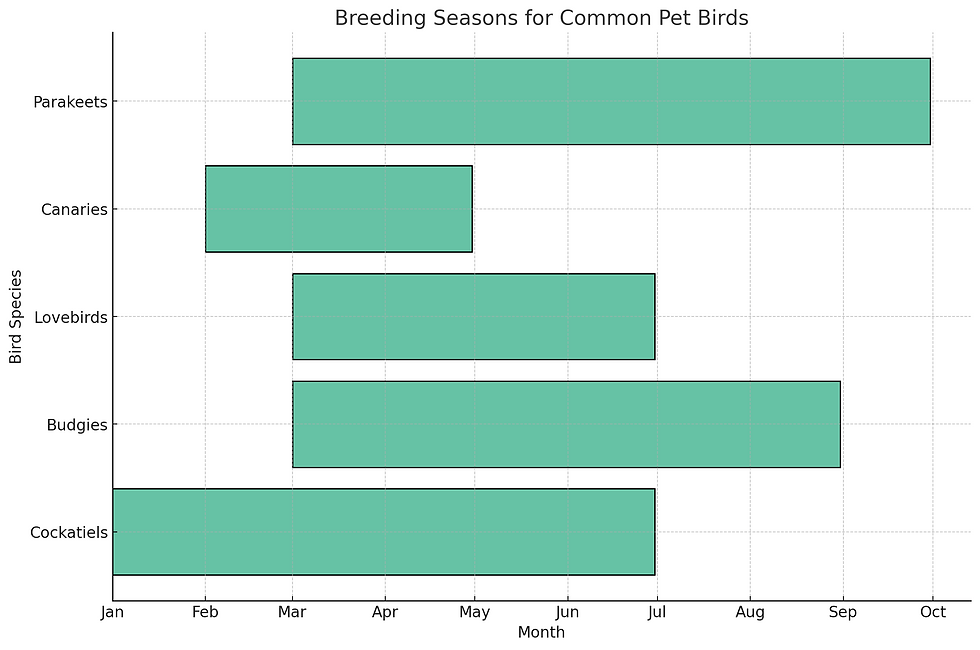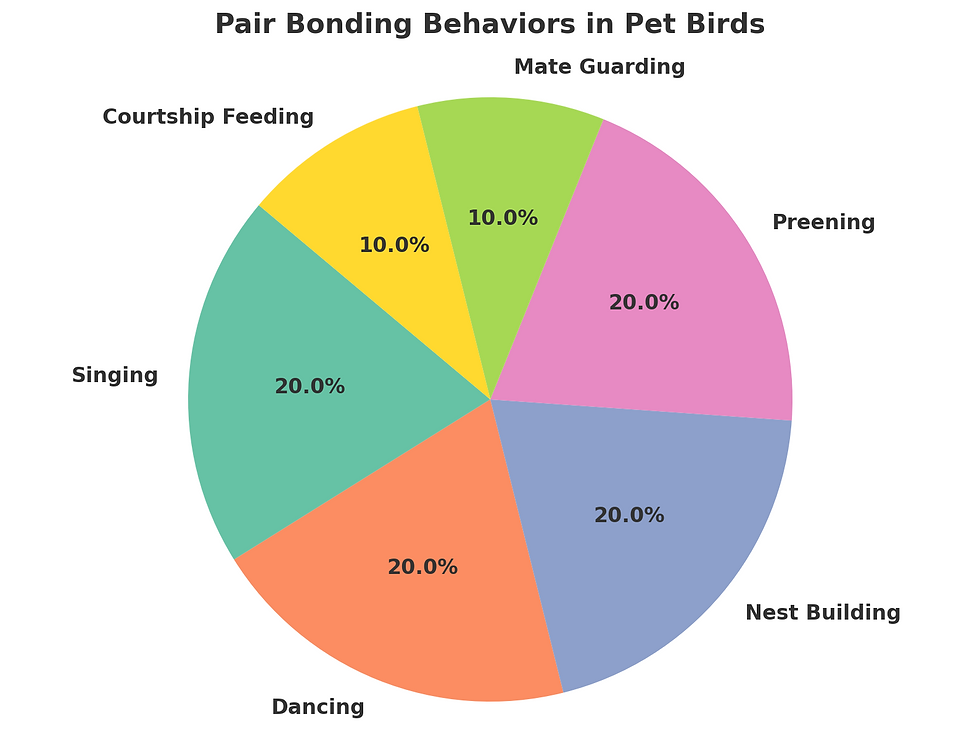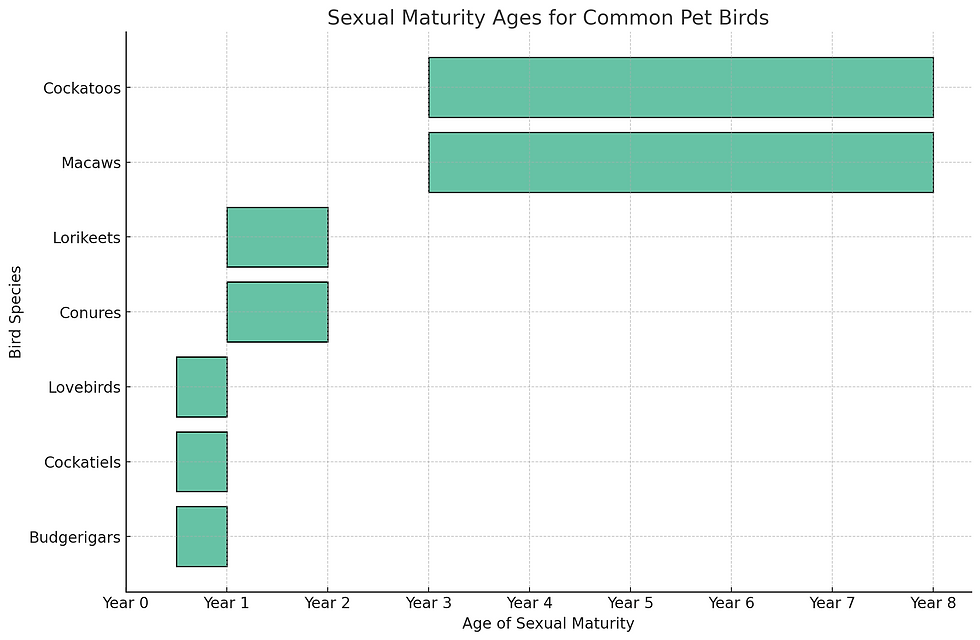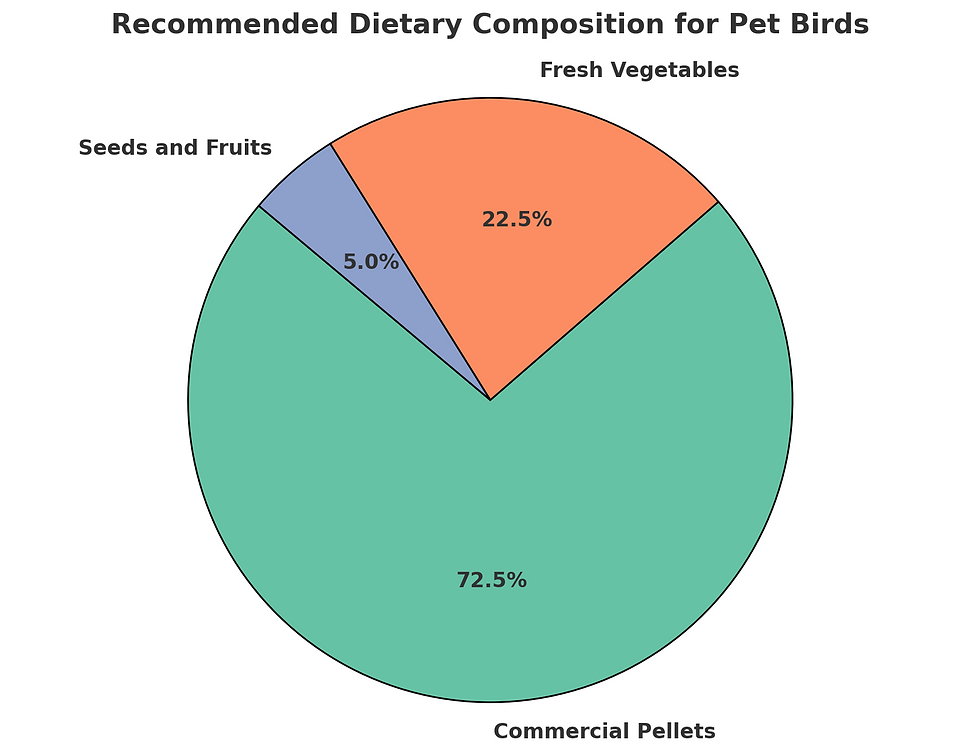Choosing the Right Breeding Pairs: A Comprehensive Guide
- Saifur Rahman
- Jul 6, 2024
- 8 min read

Key Takeaways
Topic | Key Points |
Genetic Compatibility | Understand genetic markers, avoid inbreeding, and ensure genetic diversity for healthy chicks. |
Breeding Season | Breed in the optimal season, prepare the environment, and monitor behavioral signs. |
Health Screening | Conduct regular health checks, detect early signs of illness, and prioritize veterinary care. |
Pair Bonding | Encourage bonding with a stress-free environment and monitor for mutual grooming and feeding. |
Sexual Maturity | Breed birds at the right age and manage pairs with different maturity rates. |
Behavioral Compatibility | Introduce potential pairs gradually, look for positive behaviors, and address aggression. |
Species Specific Traits | Know unique breeding traits of each species and tailor care accordingly. |
Dietary Needs | Provide a balanced diet, use supplements, and adjust nutrition during the breeding season. |
Nesting Environment | Create ideal nesting conditions with proper materials and maintain cleanliness. |
Breeding Records | Keep detailed logs of breeding activities, health checks, and genetic information. |
Introduction
Choosing the right breeding pairs is crucial for bird breeders aiming to produce healthy and vibrant offspring.
This guide covers essential aspects, including genetic compatibility, health screening, and optimal environmental conditions, to help breeders make informed decisions.
Genetic Compatibility

What are the genetic markers to look for in breeding pairs?
When selecting breeding pairs, focus on genetic markers. These are specific traits that ensure healthy chicks. Look for birds with strong, healthy backgrounds.
How does genetic diversity affect offspring health?
Genetic diversity means having a mix of different genes. This diversity creates stronger and healthier offspring, reducing the risk of genetic diseases.
What are common genetic disorders in birds that breeders should be aware of?
Be aware of common genetic disorders such as feather plucking and deformities. Knowing these helps you avoid breeding pairs that might pass on these issues.
How can breeders ensure genetic compatibility between pairs?
Ensure genetic compatibility by genetic testing. This helps match birds with complementary genes, leading to healthier chicks.
What role does inbreeding play in genetic compatibility?
Avoid inbreeding. Inbreeding can lead to serious health problems. It reduces genetic diversity, increasing the risk of genetic disorders.
Learn more about these important aspects in our detailed Breeding Basics article.
Breeding Season

When is the optimal breeding season for different bird species?
Different birds have different breeding seasons. For example, Lovebirds breed best from spring to early summer. Knowing the right time for each species ensures better breeding success.
How does the breeding season affect the success rate of bird breeding?
Breeding during the optimal season increases success rates. Birds are naturally more inclined to mate and produce healthy chicks during this time.
What environmental factors indicate the start of the breeding season?
Environmental factors such as changes in weather and daylight indicate the start of the breeding season. Birds respond to these natural cues.
How can breeders prepare for the breeding season?
Prepare for the breeding season by ensuring the right food, cages, and nesting materials are ready. Proper preparation sets the stage for successful breeding.
What changes in bird behavior signify the onset of the breeding season?
Watch for changes in behavior like increased activity and nesting behaviors. These signs indicate that birds are ready to breed.
Follow a Daily Care Routine to keep your birds healthy and prepared for the breeding season.
Quick Tips for Breeding Success
Variety in Genes: Aim for genetic diversity.
Seasonal Awareness: Breed in the right season.
Health Checks: Regular health screenings are a must.
Table: Optimal Breeding Seasons for Common Birds
Bird Species | Optimal Breeding Season |
Lovebirds | Spring to Early Summer |
Canaries | Late Winter to Spring |
Cockatiels | Spring |
Parakeets | Anytime, prefer Spring |
African Grey | Year-round, prefers Spring |
Explore more on African Grey Parrots and their breeding habits.
Continue learning with our Types of Pet Birds section to find the perfect pairs.
Health Screening

What are the essential health tests for potential breeding birds?
Before breeding, birds need to pass essential health tests. Check for common diseases and overall health to ensure they are fit for breeding.
How often should breeding pairs undergo health screenings?
Breeding pairs should undergo health screenings regularly. Schedule check-ups at least once a year to catch any potential health issues early.
What are common health issues that can affect breeding success?
Common health issues like respiratory infections and mites can affect breeding success. Keep an eye out for symptoms and treat promptly.
How can breeders detect early signs of illness in breeding pairs?
Detect early signs of illness by monitoring behavior and appearance. Look for changes in eating habits, feather condition, and activity levels.
What is the importance of veterinary care in the breeding process?
Veterinary care is crucial in the breeding process. Regular visits to a vet ensure your birds remain healthy and increase the chances of successful breeding.
For more detailed insights, read about Common Bird Diseases to stay informed.
Pair Bonding

What are effective methods to encourage pair bonding in birds?
Encourage pair bonding by providing a comfortable and stress-free environment. Use familiar toys and perches to help them feel at ease.
How long does the pair bonding process typically take?
The pair bonding process can take a few weeks to several months. Patience is key, as each bird pair is unique.
What behaviors indicate successful pair bonding?
Successful pair bonding is indicated by mutual grooming, sharing food, and close physical proximity. These signs show they are comfortable with each other.
How can breeders address issues of aggression between potential pairs?
Address aggression by providing more space and distractions. Separate the birds if needed and reintroduce them gradually.
What environmental factors facilitate pair bonding?
Environmental factors like adequate space, proper lighting, and a quiet environment facilitate pair bonding. Ensure the birds have a peaceful place to bond.
For more bonding tips, check out our Bonding Techniques article.
Quick Tips for Health and Bonding
Regular Health Checks: Keep up with vet visits.
Comfortable Environment: Provide a stress-free space.
Patience: Bonding takes time; don’t rush it.
Table: Common Health Tests for Breeding Birds
Health Test | Frequency |
Physical Exam | Yearly |
Blood Test | Yearly or as needed |
Fecal Exam | Yearly or as needed |
DNA Test | Before breeding |
Mite Check | Regularly |
Stay informed and keep your birds healthy by following a Daily Care Routine.
Continue exploring Types of Pet Birds to find the best pairs for breeding.
Sexual Maturity

At what age do different bird species reach sexual maturity?
Different bird species reach sexual maturity at different ages. For example, Cockatiels typically mature at around 1 year, while African Grey Parrots may take up to 3 years.
What signs indicate that a bird is sexually mature and ready to breed?
Signs of sexual maturity include changes in behavior, such as increased vocalization and nesting activity. Birds may also show more interest in their mate.
How does sexual maturity affect the breeding process?
Sexual maturity is crucial for successful breeding. Immature birds may not have the physical or behavioral readiness to breed successfully.
What are the risks of breeding birds that are not sexually mature?
Breeding immature birds can lead to health problems for both the parents and the offspring. It can also result in unsuccessful breeding attempts.
How can breeders manage birds that mature at different rates?
To manage birds that mature at different rates, keep track of each bird’s age and maturity level. Pair birds with similar maturity levels to ensure compatibility.
Learn more about the breeding habits of different birds, such as Cockatiels and their specific needs.
Behavioral Compatibility
What behaviors should breeders look for to determine compatibility?
Look for positive behaviors such as mutual grooming, feeding each other, and spending time close together. These behaviors indicate good behavioral compatibility.
How can breeders introduce potential pairs to assess compatibility?
Introduce potential pairs gradually. Start with short, supervised interactions and increase the time together as they become more comfortable with each other.
What are common behavioral issues that affect breeding success?
Common issues include aggression, territorial behavior, and lack of interest in each other. Address these issues promptly to improve compatibility.
How can environmental enrichment improve behavioral compatibility?
Environmental enrichment, such as toys and perches, can reduce stress and boredom, leading to better behavior and compatibility.
What role does socialization play in behavioral compatibility?
Socialization helps birds become comfortable with each other. Regular interaction with their mate and other birds fosters positive behaviors.
For more tips on socializing birds, check out our article on Bonding Techniques.
Quick Tips for Sexual Maturity and Behavioral Compatibility
Monitor Maturity: Keep track of each bird’s maturity.
Positive Behaviors: Look for mutual grooming and feeding.
Gradual Introduction: Introduce potential pairs slowly.
Table: Sexual Maturity Ages for Common Birds
Bird Species | Sexual Maturity Age |
Cockatiels | 1 year |
Lovebirds | 10 months |
Canaries | 9 months |
Parakeets | 6 months |
African Grey | 3 years |
Keep exploring our Types of Pet Birds section to find more about their unique traits and needs.
Species Specific Traits
What unique breeding traits should breeders be aware of for each species?
Each bird species has unique breeding traits. For instance, Lovebirds are known for their strong pair bonds, while Canaries require specific nesting materials. Understanding these traits helps ensure successful breeding.
How do species-specific traits affect the selection of breeding pairs?
Species-specific traits influence how you choose breeding pairs. Some species need larger spaces, while others thrive in smaller environments. Choose pairs that match their species' natural behaviors and needs.
What are the challenges of breeding different bird species?
Breeding different bird species can be challenging due to varying dietary needs, mating behaviors, and environmental requirements. Each species may require different care.
How can breeders manage the varying needs of different species?
Manage varying needs by creating tailored environments. Provide species-specific diets and nesting materials. For example, Hyacinth Macaws need a diet rich in nuts.
What resources are available for learning about species-specific breeding traits?
Many resources are available, including books, online articles, and bird breeding forums. Check out our section on Types of Pet Birds for detailed information on various species.
Learn more about specific traits in our articles on Lovebirds and Hyacinth Macaws.
Dietary Needs

What are the nutritional requirements for breeding birds?
Breeding birds need a balanced diet rich in proteins, vitamins, and minerals. This ensures they have the energy and nutrients needed for healthy breeding and chick development.
How can diet affect the breeding success of birds?
A poor diet can lead to weak eggs and unhealthy chicks. Ensure breeding pairs receive high-quality food to support their health and breeding success.
What supplements are beneficial for breeding pairs?
Supplements such as calcium, vitamins, and minerals can boost breeding success. Calcium is particularly important for egg production.
How should breeders adjust the diet during the breeding season?
During the breeding season, increase the protein and calcium in their diet. Offer fresh fruits, vegetables, and specialized breeding formulas.
What are common dietary deficiencies that affect breeding birds?
Common deficiencies include lack of calcium and protein. These can lead to weak eggshells and poor chick development.
For more on the importance of diet, read our article on the Importance of a Balanced Diet for Birds.
Quick Tips for Species Traits and Dietary Needs
Know Your Species: Understand unique breeding traits.
Tailored Diets: Provide species-specific diets.
Use Supplements: Ensure nutritional support.
Table: Key Dietary Needs for Breeding Birds
Nutrient | Importance | Sources |
Protein | Egg and chick development | Eggs, beans, legumes |
Calcium | Strong eggshells | Cuttlebone, eggshells, supplements |
Vitamins | Overall health | Fresh fruits, vegetables |
Minerals | Metabolic functions | Seeds, grains, supplements |
Explore more about bird diets in our Fresh Foods article.
Continue exploring our Types of Pet Birds section to learn more about their specific needs.
Nesting Environment

What are the ideal nesting conditions for breeding birds?
Ideal nesting conditions include a quiet, safe space with proper nesting materials. Ensure the cage is spacious and has a comfortable temperature.
How can breeders create a suitable nesting environment?
Create a suitable nesting environment by using appropriate nesting materials like straw, shredded paper, and softwood. Keep the area clean and free from disturbances.
What materials are best for bird nests?
Best materials for bird nests include natural fibers, shredded paper, and specific nest boxes. Avoid synthetic materials that can harm the birds.
How does the nesting environment impact the health of offspring?
A good nesting environment ensures the health of offspring. Proper materials and conditions help regulate temperature and provide comfort, leading to stronger, healthier chicks.
What are common nesting environment issues and how can they be resolved?
Common issues include lack of space, poor ventilation, and unsuitable nesting materials. Resolve these by providing a larger cage, improving airflow, and using safe, natural nesting materials.
For more on creating the best environment, read our guide on Choosing a Cage.
Quick Tips for Nesting Environment
Quiet Space: Ensure a peaceful area for nesting.
Proper Materials: Use safe, natural fibers.
Regular Cleaning: Maintain a clean environment.
Table: Essential Nesting Materials
Material | Purpose | Source |
Straw | Soft bedding | Pet stores, farms |
Shredded Paper | Insulation and comfort | Home, pet stores |
Softwood Shavings | Safe and absorbent bedding | Pet stores |
Natural Fibers | Comfortable nesting material | Pet stores, online |
Nest Boxes | Secure nesting space | Pet stores, DIY |
Learn more about the ideal setup in our Cage Size Guidelines.
Breeding Records
Why is it important to keep detailed breeding records?
Keeping detailed breeding records helps track the health, genetics, and history of each breeding pair. This information is crucial for making informed breeding decisions.
What information should be included in breeding records?
Include information such as dates of mating, health checks, genetic information, and outcomes of each breeding attempt. This helps monitor progress and address issues promptly.
How can breeding records help improve future breeding efforts?
Breeding records provide valuable insights into what works and what doesn’t. Analyzing past records helps improve future breeding strategies and outcomes.
What tools or software are available for managing breeding records?
Various tools and software are available to manage breeding records, from simple spreadsheets to specialized breeding software. Choose one that suits your needs and helps keep organized.
How can breeders use records to track genetic lines and health histories?
Use breeding records to monitor genetic lines and health histories. This helps in avoiding inbreeding and ensuring the health of future generations.
For more insights, explore our section on Breeding Basics.
Quick Tips for Breeding Records
Detailed Logs: Keep comprehensive records.
Regular Updates: Update records promptly.
Use Technology: Leverage tools for better management.
Table: Essential Information for Breeding Records
Information | Importance |
Mating Dates | Track breeding cycles |
Health Checks | Monitor health status |
Genetic Info | Ensure genetic diversity |
Breeding Outcomes | Analyze success and failures |
Offspring Health | Monitor chick development |
Conclusion
Choosing the right breeding pairs involves careful consideration of genetic, health, and environmental factors.
By focusing on genetic compatibility, health screenings, behavioral compatibility, and proper record-keeping, breeders can improve their chances of success and contribute to the health and vitality of bird populations.
This comprehensive approach ensures that both the breeding pairs and their offspring thrive in a well-managed and supportive environment.


Comments